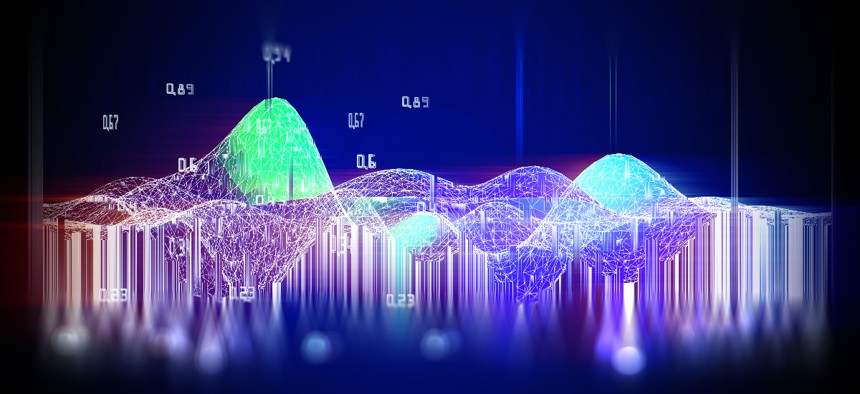Quantum Sensing Has ‘Critical’ Potential for Electrical Grid, Official Says

Anadmist/Getty Images
Quantum information technologies could be applied to the electrical grid for security and sustainability improvements.
The Department of Energy is looking into the myriad applications quantum information sciences can have within the transition to a cleaner and more secure energy economy and infrastructure.
Speaking during a forum hosted by the Center for Strategic and International Studies, Rima Oueid, a senior commercialization executive at Energy, explained that the agency is exploring how to apply faster, more secure QIS tech to the country’s electrical grid.
“At the Department of Energy, we're working on quantum [technologies] from the standpoint of basic science research, but also looking at it all the way across the spectrum into commercialization and deployment,” Oueid said. She explained that while Energy has received funding to help develop a fault-tolerant quantum computer and corresponding network, her office has turned its attention to other applications of QIS that can optimize the U.S. power grid.
“There's also an opportunity for quantum sensing technologies to do anomaly detection for quantum atomic clocks, to do position navigation and timing, because our grid is not only connected to renewable energy assets, but also electric vehicles that put power back on the grid,” she said. “And so quantum sensors and quantum clocks can be deployed onto vehicles that become assets to the grid.”
In addition to supporting widespread electric vehicle deployment, Oueid added that quantum computing can also add to the security of the U.S.’s electrical grid by conducting sophisticated contingency analyses.
Oueid’s comments come as national security concerns over the digital resilience of critical infrastructure have moved to the forefront. The U.S. electrical grid, one of the key arteries to supporting diverse operations across the country, has received federal funding and attention in a bid to become more secure and sustainable.
Incorporating quantum sensing devices throughout the U.S. grid system could function as an effective way to preemptively detect and address potential digital threats.
“I think quantum sensing is a great example of a technology where it could be utilized to identify anomalies and help us protect against them and compartmentalize them early on,” Oueid said. “I think we want to use these technologies now to become as resilient as possible, and also allow ourselves to use these technologies to become more diversified.”
She further confirmed that there is already a national working group in place spanning several federal agencies to help identify ways to secure global positioning system technologies, which interact with the electrical grid. As electric vehicles stand to further integrate with the grid and GPS technologies, quantum sensing could determine if these connected devices will be assets or security liabilities.
Energy is also aiming to further research and deploy hydrogen fuel cells as an alternative energy source, and Oueid noted that quantum sensing can be utilized in this capacity to prevent methane leakage, as well as precisely measure the environmental impacts of oil and natural gas drilling and other geothermal operations.
“There's some exciting imaging capabilities here that we could exploit with quantum sensors, and so I think it's an exciting area to be focused in,” she said.






